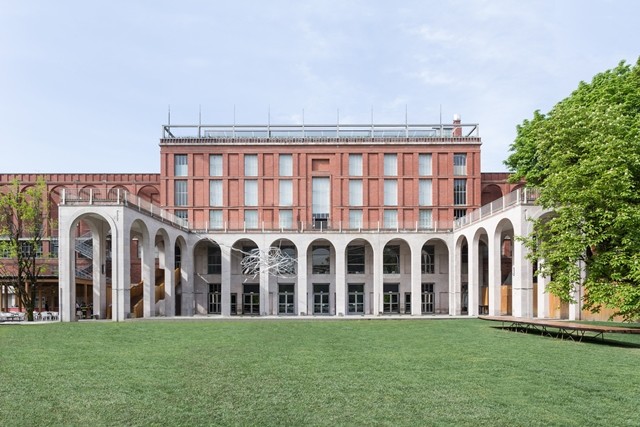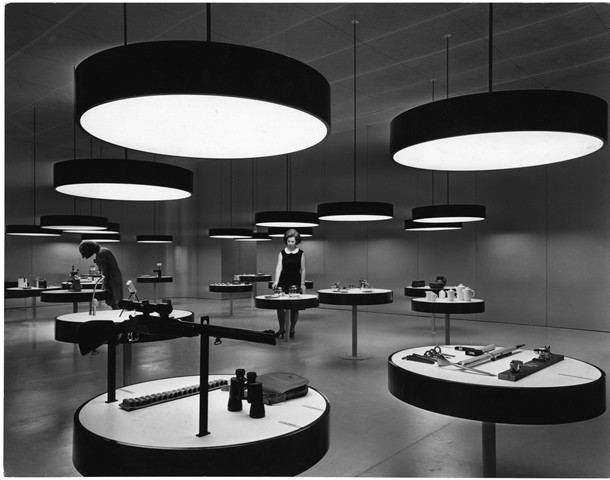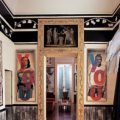 Photo:by Gianluca Di Loia True professionals in their field not only surprise with the bold presentation of the most successful projects, but also share their experience with up-and-coming talents at the meetings of the "Union of Designers", whose work Woman's Day has already introduced to its readers. Today, together with the editors of the magazine "Lake Como", we invite you to plunge into the world of design art, but this time in an international format. Exactly 20 years have passed since the decision was made to no longer hold the Milan Triennial. It seemed that the International Exhibition of Architecture, Design, Applied Arts, Fashion and Crafts had no future. The decision was dictated by some fatigue and the lack of fresh solutions after 63 years of remarkable history. The first triennials were held from 1923 to 1930 in the neighboring city of Monza, on the premises of the Institute of Industrial Design (a kind of Italian Bauhaus). The original goal of the exhibition was to present the works of graduates of the art school to enterprises of the rich industrial region. Subsequently, the exhibition acquired an international format. Famous artists and architects took part in it: Giorgio de Chirico, Gio Ponti, Mario Sironi, Marino Marini, Le Corbusier. Design works that became classics of serial production were exhibited, such as Mies van der Rohe's chair made of bent metal tubes. The holding of the international exhibition in 1933 was moved to Milan, for which the architect Giovanni Muzio built the Palace of Art in the then fashionable rationalist style. The exhibition became known as the Triennale (i.e. three-year). In 2007, the first museum of Italian design was opened in the Triennale building.
Photo:by Gianluca Di Loia True professionals in their field not only surprise with the bold presentation of the most successful projects, but also share their experience with up-and-coming talents at the meetings of the "Union of Designers", whose work Woman's Day has already introduced to its readers. Today, together with the editors of the magazine "Lake Como", we invite you to plunge into the world of design art, but this time in an international format. Exactly 20 years have passed since the decision was made to no longer hold the Milan Triennial. It seemed that the International Exhibition of Architecture, Design, Applied Arts, Fashion and Crafts had no future. The decision was dictated by some fatigue and the lack of fresh solutions after 63 years of remarkable history. The first triennials were held from 1923 to 1930 in the neighboring city of Monza, on the premises of the Institute of Industrial Design (a kind of Italian Bauhaus). The original goal of the exhibition was to present the works of graduates of the art school to enterprises of the rich industrial region. Subsequently, the exhibition acquired an international format. Famous artists and architects took part in it: Giorgio de Chirico, Gio Ponti, Mario Sironi, Marino Marini, Le Corbusier. Design works that became classics of serial production were exhibited, such as Mies van der Rohe's chair made of bent metal tubes. The holding of the international exhibition in 1933 was moved to Milan, for which the architect Giovanni Muzio built the Palace of Art in the then fashionable rationalist style. The exhibition became known as the Triennale (i.e. three-year). In 2007, the first museum of Italian design was opened in the Triennale building. A photo: archive of the magazine "Lake Como" And then, finally, the moment came when Design with a capital letter returns to Milan. With the support of the International Bureau of Exhibitions, as well as state and municipal structures, in 2016 the 21st triennale is held with the mysterious name “Design after Design”. What does this topic mean? The exhibition organizers talk about the fourth industrial revolution, or 4.0, about new technologies, such as 3D printing, which give modern “artisans” anywhere in the world incredible production possibilities, about the relationship of design and the modern city, about globalization as opposed to historical traditions, and about new frontiers of information technology.
A photo: archive of the magazine "Lake Como" And then, finally, the moment came when Design with a capital letter returns to Milan. With the support of the International Bureau of Exhibitions, as well as state and municipal structures, in 2016 the 21st triennale is held with the mysterious name “Design after Design”. What does this topic mean? The exhibition organizers talk about the fourth industrial revolution, or 4.0, about new technologies, such as 3D printing, which give modern “artisans” anywhere in the world incredible production possibilities, about the relationship of design and the modern city, about globalization as opposed to historical traditions, and about new frontiers of information technology.

Making Money with Desserts: Success Stories
Evgeniya Polischuk (Fedutinova) instagram:@evgeniyafedutinovavk.com/janeshomebaking– It all started with baking for family and friends. Gradually, I started posting photos of my baked goods on Instagram – and orders started coming in. I made my first custom-made cake on October 13, 2014, and a little earlier I started making macaroons and cupcakes. You could say that the business “found me”, I am very […]

Soups are cold recipes with photos
Cold cucumber soup with yogurt and lemonsorbet from the chef of the restaurant La Taverna Alexander Zhurkin Photo: Getty Images Ingredients: Plain yoghurt – 125 g Cucumber – 150 g Lemon/lime sorbet – 50 g Cocktail shrimp – 24 g Fresh ginger juice – 1 g Lime juice – 5 g Fresh orange juice – 5 g Parsley – 1 g Pink pepper – 1 g Watercress – […]

barbeque kebab
Pork tenderloin in glaze Photo:Dmitry Bayrak/dbstudioPreparation time: 20 minutes + marinating time.Calories: 454 kcal per serving.For 4 servings: 4 pork tenderloins (approximately 300 g each), 1 onion, 2 cloves of garlic, 1 tsp. lemon zest, 1 tsp. lemon juice, a pinch of ground cumin, coriander and turmeric, 1 tbsp. vegetable […]

Pierre Duacan: dietary recipes: Ducane diet
Beetroot soup Photo:Season’S, Luxury Hotels RepresentationYou will need:· Boiled beetroot – 60 g· Fresh cucumbers – 20 g· Red radish – 20 g· Green onions – 10 g· Egg – 1 pc.· Drinking mineral water – 200 g· Salt – 1 gPreparation:· Boil the egg and beetroot.· Grate the cucumbers, radish and part of the beetroot. Put everything […]





